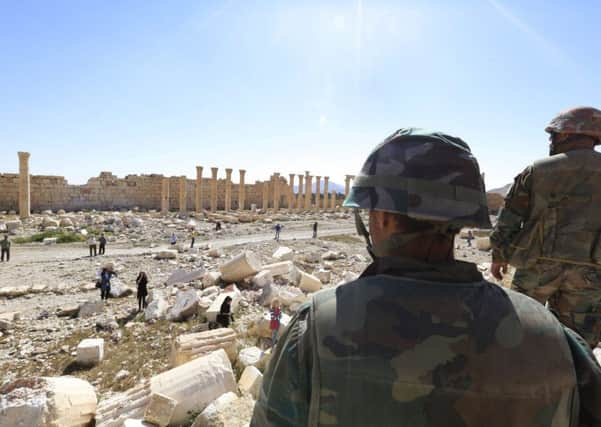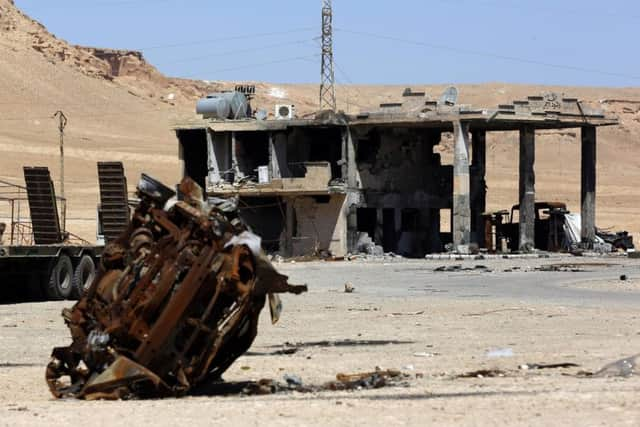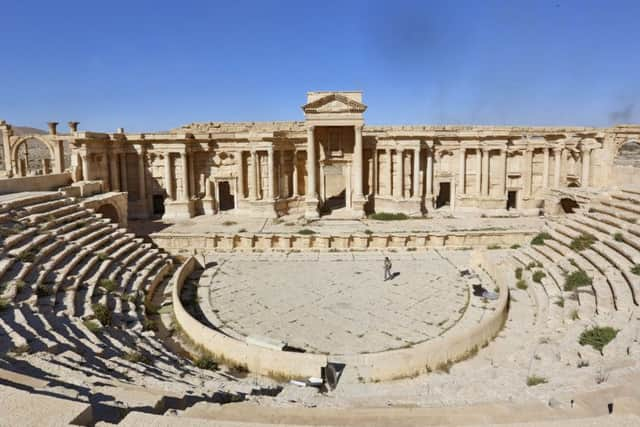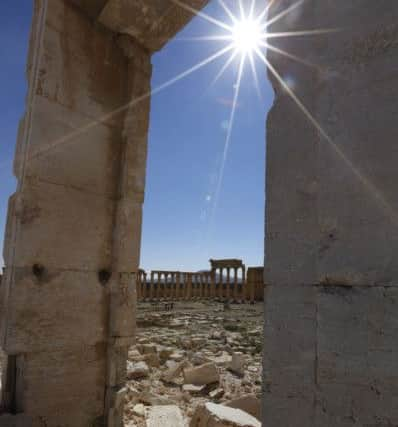Syria's Palmyra is a ghost town bearing scars of IS destruction


A team of journalists visiting the town on Friday witnessed first hand the destruction inflicted by the extremist group on the town’s famed archaeological site, less than a mile away from the modern-day town of the same name, now completely deserted.
While some parts of the site, including the Roman-era grand colonnades and amphitheatre appeared relatively untouched, the damage was very much visible elsewhere.
Advertisement
Hide AdAdvertisement
Hide AdThe remarkable Arch of Triumph, built under the Roman emperor Septimius Severus between AD 193 and AD 211, has been reduced to a pile of stones, blown up by IS extremists who filmed the destruction for the world to see. The monumental arch once sat atop the famed colonnaded streets of the ancient town.


The Temple of Baalshamin and parts of the Temple of Bel, one of the best-preserved Roman-era sites, are also destroyed.
Apart from the Roman ruins themselves, heavy damage could be seen on parts of the walls of Palmyra’s towering Mamluk-era citadel, built during the Islamic conquest in the 13th century. On top of the scarred citadel, a Syrian flag flies in the wind.
Palmyra is located about 155 miles east of Damascus, the Syrian capital. Government troops, backed by allied militiamen and Russian airstrikes together retook the town last Sunday from IS militants who had controlled Palmyra and its environs for ten months.
Ancient Palmyra is a Unesco World heritage site – an archaeological gem that attracted tens of thousands of tourists every year.


It was completely deserted on Friday, except for Syrian army soldiers working on dismantling explosives and visiting journalists. The town – about a kilometre away from the ruins – is deserted. Its remaining residents had fled as the Syrian army’s offensive against IS began a month ago.
Traces of the fighting could be seen all around. Burned cars parked at the side of the road, electricity cables strewn about on the streets, and scattered empty water tanks, apparently used as barricades.
At the entrance to the Roman amphitheatre, where IS filmed children shooting captive Syrian soldiers in the head, black graffiti is sprayed on a stone wall.
Advertisement
Hide AdAdvertisement
Hide Ad“Lasting and Expanding,” it read in Arabic, a logo of the Islamic State group. “The Islamic State” is scribbled on another nearby wall.


A Syrian officer told reporters that more than 3,000 mines had so far been dismantled. “They booby-trapped everything, trees, doors, animals,” he said, speaking of the militants. Russian sappers have arrived in Syria to help the Syrian army clear mines in and around the town.
Later Friday, Syria’s state-run Sana news agency reported that Syrian engineering teams and popular defence groups uncovered a mass grave in a northeastern neighbourhood of Palmyra containing the remains of about 40 people, 23 of them women and children.
The report, which could not be independently verified, said the people were killed by IS extremists. It said some bodies were beheaded, others bore signs of torture.
The recapture of Palmyra was a strategic coup for President Bashar Assad through which he hopes to convince the West that the Syrian army is a credible partner in combating terror as it ramps up the fight against the Islamic State.


“The Syrian army is defending Rome and London in as much as it is defending Damascus,” another officer told the visiting reporters on Friday. Both officers spoke on condition of anonymity because they were not authorised to give statements to media crews.
He handed reporters a booklet he said the militants had apparently distributed to Palmyra residents.
It reads: “Loyalty to Islam, not to the nation.”